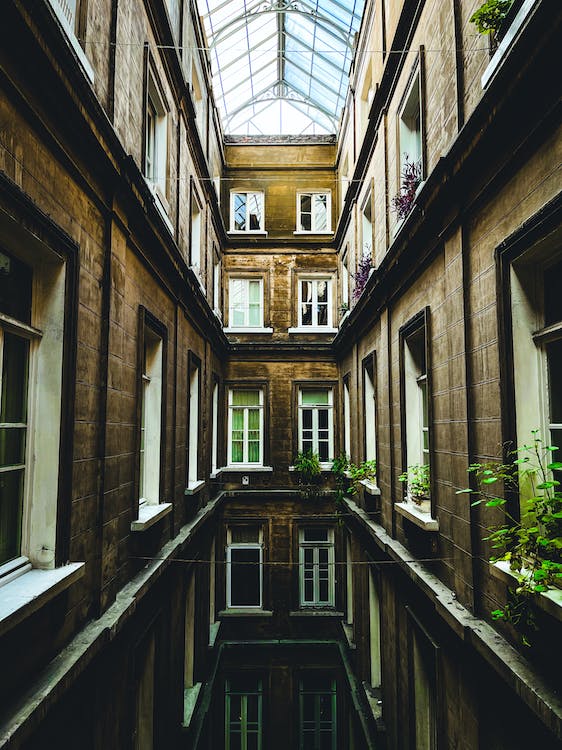Mold and mildew can grow in your home if there are damp, hot, and humid areas, as well as water-damaged areas. Typically, mold and mildew love to grow in shower walls, basements, windowsills, and laundry rooms, especially if they have poor ventilation and high moisture content in the air. On the outside of the house, green and black mildew can grow in walls that are shaded by bushes, don’t get sunlight or get wet often (usually by sprinklers or hoses or leaking gutters).
Stains caused by these spores are unsightly, and can even cause allergies or respiratory illnesses. These can be removed and prevented by using common household supplies. But remember, they can be toxic depending on the species of mold – black mold is found the most harmful – so always exercise caution when removing them, especially if it’s abundant.
Removing mold and mildew from painted walls
Mold can appear in painted walls. You must clean it, kill the spores and use the right type of paint and primer to prevent future growth (given that the cause of mold is not a structural problem). If there is extensive water damage in your home and it has caused an excessive amount of black mold, it is recommended that you call a professional to have it removed.
But if the mold is in a painted wall with a sound structure, all you need is a cleaner and some scrubbing.
1. Prepare the area
Remove nearby furniture and keep the area clear. Because you will be using bleach, protect surrounding surfaces like flooring to prevent any damage caused by spills. Cover the floor in plastic and tape them in place. Be sure to learn how to lay damp proof membrane concrete floor as well. Prepare old cloths or rags to catch any spills.
2. Prepare cleaning solutions
Bleach and water solution is an effective mold and mildew remover. In a spray bottle, mix one part bleach with three parts warm water. For cleaning the walls, mix one part detergent with three parts warm water. Also, prepare a spray bottle with clean water.
3. Begin cleaning
Spray your detergent solution in the affected area and scrub it off with a rag or sponge. Rinse the area by spraying it off with clean water. Wipe it dry with a dry rag. Then, spray your bleach solution on the affected area and leave it on for 20 minutes. Rinse the area with water again and dry with a rag.
4. Repaint
If the paint on your walls have withstood the cleaning that you did, or if you only covered a small area, then you don’t need to touch up. But, if it caused breakdown and discoloration of paint, especially in a large, visible area, you will need to repaint. First, wait for the wall to dry up completely. Then, apply a coat of mildew-blocking primer and allow it to dry overnight. Apply 1-2 coats of mildew resistant paint and let dry. You may add a packet of mildewcide additive to the paint before using for extra protection.
When removing mold and mildew from walls, here are some general tips:
- Wear protective rubber gloves, face mask, and goggles before working on it, as contact with spores can be harmful, and because bleach can be irritating to the skin, lungs, and eyes. Also, wear old clothes since you may get some of the bleach on yourself.
- If mold is not very widespread, you can simply use vinegar and borax. Combine ¼ cup white vinegar, 2 tablespoons borax and 2 cups of warm water in a spray bottle. Scrub thoroughly with a sponge, rinse and spray again let it sit for 10 minutes before it wiping dry.
- It the procedure above did not work, use commercial products specially formulated for mold and mildew on walls. These chemicals may be stronger, so avoid mixing it with other cleaning solutions to avoid toxic chemical reactions.
- While working, open the windows or use a fan to keep the area well-ventilated.
Removing mold and mildew from basement/concrete walls
Concrete walls like in the basement or garage can catch mold that is usually white, black or bluish.
1. Prepare the area and gear up
Move furniture, carpeting, cardboard boxes, and other items out of the way. Dispose of those that are affected by the mold as well. Also, don’t forget to wear rubber gloves, face mask, and goggles, as well as old clothes.
2. Prepare solution and scrub
Mix one part bleach with three parts water in a bucket, and apply it to the affected areas. Use a heavy-duty sponge or scrub brush to remove the mold until they disappear. You may need to apply the solution again on the wall after you’ve scrubbed it to let the bleach soak in and kill the remaining spores. For tough infested areas, you can use both a commercial mold and mildew remover and the bleach/water solution. After you have scrubbed the walls, dry them with a towel.
To prevent mold and mildew from recurring, here are some helpful tips:
- Fix leaks as soon as possible to prevent moisture from seeping into the cavities, the walls and under the floors.
- Purchase an electric dehumidifier in areas that are badly affected by walls.
- Upgrade your home insulation. Most times, mold and mildew are caused by bad insulation. When walls are properly insulated, it will reduce the potential for forming moisture.
- Keep indoor air from becoming warm and stagnant. Open your windows and let natural air in, or use air conditioners, fans and dehumidifiers.
- Keep bathrooms dry as much as possible.

